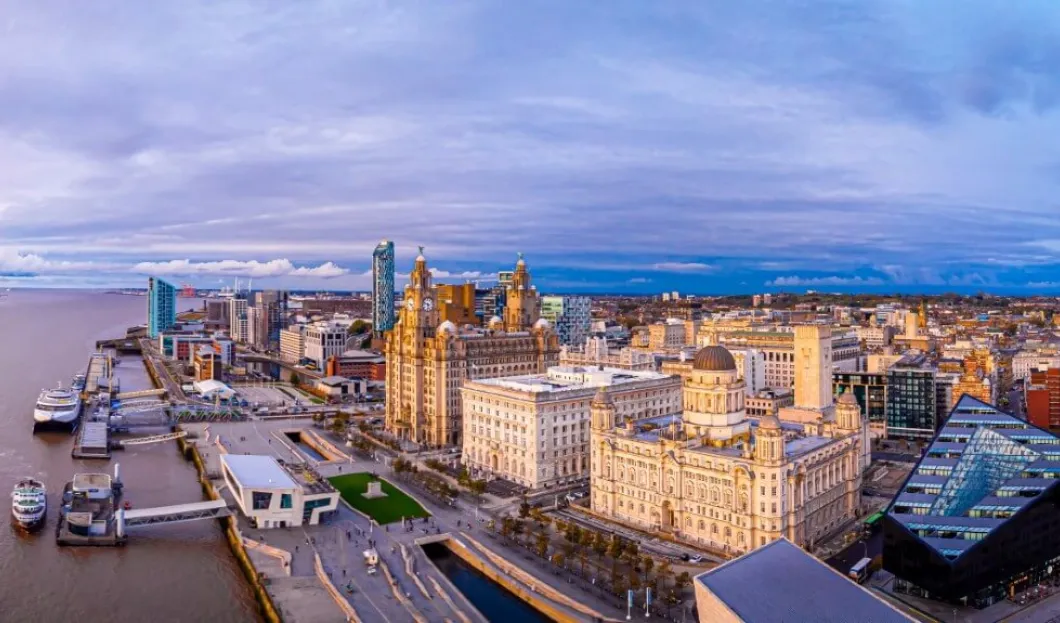
The northern English port city of Liverpool played a decisive role in the development of Great Britain. In the 18th and 19th century, the city was one of the most important trading centers in the world. To this day, vacationers can get an idea of this at six sites in Liverpool's historic center and harbor area. These sites were added to the UNESCO World Heritage List in 2004.
Now the UNESCO committee has decided that the city's World Heritage status will be withdrawn. The reason: According to UNESCO, numerous construction projects have caused Liverpool to lose its character, which was the decisive factor in its classification as a World Heritage Site.
Liverpool Already an Endangered Site Since 2012
The committee's decision to revoke Liverpool's World Heritage status had been in the offing for years. Due to the "Liverpool Waters" urban development project, the construction of high-rise buildings, new infrastructure projects and the planned construction of a new stadium for Everton FC soccer club, Liverpool had already been on the list of endangered sites since 2012 as a maritime trading city.
As the city did not want to deviate from its plans, the withdrawal of the title now followed. The committee responsible for education, science, culture and communication made the decision at a meeting last week. The mayor of Liverpool, Joanne Anderson, reacted "disappointed and concerned" about the decision of the committee. She considers them "completely wrong".
UNESCO World Heritage Title Revoked Three Times
Besides Liverpool, only two other World Heritage sites have lost their World Heritage status so far: the Elbe Valley in Dresden and the Arabian Oryx Wildlife Sanctuary in Oman. The Elbe Valley lost its status in 2009 because of the construction of the Waldschlösschen Bridge, while in Oman the reduction in the size of the wildlife sanctuary for the endangered Arabian oryx antelope was the decisive reason in 2007.
On the other hand, more than 50 sites are currently considered endangered: one of the reasons is climate change. The climate crisis has become one of the biggest risks for world heritage sites and could lead to losing some of them forever. Other common reasons for the endangerment are armed conflicts and mass tourism.
Threatened Venice: Italy Gives in to Pressure from UNESCO
It is precisely because of this mass tourism that UNESCO threatened to put Venice on the "red list" of cities that could lose its status as a World Heritage Site. In addition to mass tourism and the resulting exodus of locals, UNESCO also criticized the fact that cruise ships could come within a few meters of Piazza San Marco and the Doge's Palace. The waves created by the ships would damage the city's foundations.
Italy buckled under the pressure. Last week, Infrastructure Minister Enrico Giovanni announced that cruise ships would no longer be allowed to pass through the San Marco basin and Canale della Giudecca. Starting Aug. 1, ships weighing more than 25,000 gross tons, more than 180 meters long or more than 35 meters high will have to steer clear of the lagoon city and call at the industrial port of Marghera.
Australia: Climate Change Threatens the Great Barrier Reef
Australia is also trying to ensure that the Great Barrier Reef, which is threatened by climate change, will not be added to the list of endangered natural sites. The country has submitted a proposed amendment to delay the committee's decision until 2023 and avert damage to its image for the time being.
The world's largest reef, covering more than 340,000 square meters, is threatened by warm waters and coral lead as a result of climate change. According to UNESCO, the long-term prospects of the natural wonder have gone from "poor" to "very poor."










